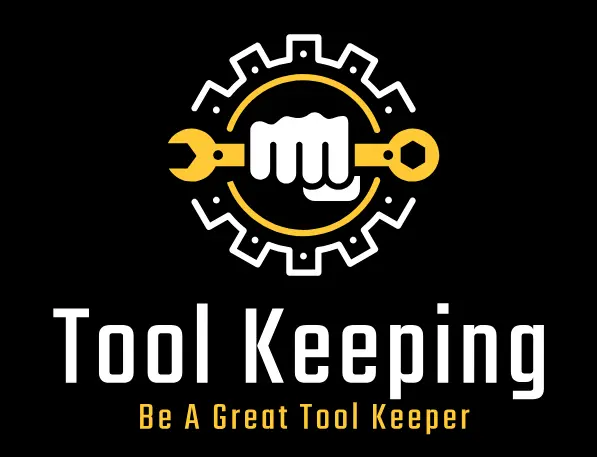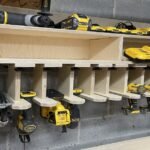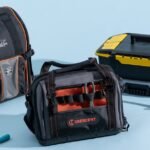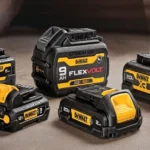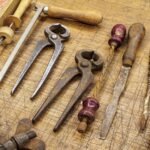A tool belt is a useful accessory that keeps your tools within easy reach, saves time, and increases productivity. Repairing and maintaining your tool belt can extend its lifespan, save money, and enhance the quality of your work.
How To Repair Your Tool Belt Properly?
In this article, we will discuss how to repair your tool belt properly, including tips for repairing a tool belt, fixing a broken buckle, replacing worn-out parts, and more.
Common Tool Belt Issues
Tool belts are incredibly useful, however they can experience common tool belt issues that affect their functionality. Some of these issues include:
- Ripped Pockets: The pockets of a tool belt can rip due to regular wear and tear, exposure to harsh weather conditions, or overloading the belt with excessive weight.
- Broken Buckles: The buckle of a tool belt can break, making it difficult to fasten the belt securely. This can be caused by heavy use or accidental damage.
- Faulty Tensioners: Tensioners in a tool belt can become faulty, leading to difficulty adjusting the belt for a comfortable and secure fit.
It is important to address these issues promptly to ensure that your tool belt remains functional and safe to use. In the following sections, we will discuss how to repair these common tool belt issues, providing easy-to-follow instructions for each repair.
How To Repair Your Tool Belt At Home?
To repair a tool belt, you will need the following supplies: a leather-stitching awl, needle, thread, scissors, and a ruler. Here are the step-by-step instructions:
- Assess the Damage: Identify the areas that need repair, such as ripped seams or holes in the leather.
- Prepare the Belt: Clean the belt and lay it on a flat surface. If there are holes, use a ruler to mark the stitching line and punch small holes along the marked line using an awl.
- Thread the Needle: Cut a length of thread and thread it through the needle. Tie a knot at the end of the thread to prevent it from pulling through the leather.
- Start Stitching: Push the awl straight through the old seam holes, and then pull the needle through the holes, creating a stitch. Repeat this process along the marked line, ensuring the stitches are evenly spaced and tight.
- Finishing the Stitch: Once you reach the end of the repair, tie off the thread by creating a knot to secure the stitching.
- Reinforce if Necessary: If the repair is in a high-stress area, consider using a leather adhesive or additional stitching to reinforce the repair.
By following these steps, you can repair your tool belt properly, ensuring its longevity and continued usefulness.
How To Repair Your Tool Belt Buckle?
If your tool belt buckle is broken, you can repair your tool belt buckle with a few basic tools. Here are the step-by-step instructions:
- Inspect the Buckle: Look closely at the buckle to determine if there is damage to the prong or the catch.
- Remove the Buckle: If you need to take the buckle apart, use pliers to remove the rivets that attach the buckle to the belt.
- Fix the Buckle: If you see damage to the prong, use pliers to carefully bend it back into place. If you see damage to the catch, use a screwdriver to pry it open without breaking it.
- Attach the New Buckle: Once the buckle is fixed, use an awl to create a new hole in the belt where the old rivet holes were. Then, reattach the buckle to the belt using new rivets if needed.
- Test the Buckle: Once you have reattached the buckle, test it to make sure it works properly.
How To Replace A Tool Belt Parts?
Sometimes, replacing parts of a tool belt, such as worn-out pockets or straps, may be necessary. Here are some tips for finding replacement parts and installing them properly:
- Inspect the Belt: Regularly check your tool belt for signs of wear and tear, such as holes, rips, or loose stitching. If you notice any of these signs, it’s time to consider replacing the affected parts.
- Finding Replacement Parts: Look for replacement parts from the manufacturer or a reputable retailer. Ensure that the replacement parts are compatible with your existing tool belt.
- Replacing Pockets: If you need to replace a pocket, follow the manufacturer’s instructions for attaching it to the belt. This may involve using a specific tool or adhesive to secure the pocket in place.
- Replacing Straps: If you need to replace a strap, measure the length of the strap and cut a new one using a ruler and scissors. Attach the new strap to the buckle using the appropriate hardware, such as rivets or screws.
- Clean and Organize: After replacing parts, clean your tool belt thoroughly to remove any dust or debris. Organize the tools in the pockets and straps to ensure efficient use and prevent further wear and tear.
Repair Your Tool Belt Tensioner
To repair your tool belt tensioner, you can follow these general steps:
- Assess the Damage: Identify the issue with the tensioner, such as a broken or loose mechanism.
- Tighten the Tensioner: If the tensioner is loose, try tightening it using the appropriate tool or mechanism.
- Replace the Tensioner: If the tensioner is broken, you may need to replace it. Look for replacement parts from the manufacturer or a reputable retailer.
- Install the New Tensioner: Follow the manufacturer’s instructions for installing the new tensioner, ensuring that it is securely attached to the belt.
- Test the Tensioner: Once you have installed the new tensioner, test it to make sure it works properly.
For more detailed instructions on repairing a tool belt tensioner, refer to the manufacturer’s instructions or consult a professional.
The Final Words
Maintaining and repairing your tool belt is crucial for its longevity and safety. Regular maintenance, such as cleaning, organizing, and inspecting for wear and tear, can prevent injuries. These things ensure that your tools are in good condition and easily accessible.
Additionally, replacing worn-out parts, such as pockets or straps, can extend the lifespan of your tool belt and save you money in the long run. Therefore, it is essential to prioritize the repair of your tool belt to make the most out of this valuable accessory.
FAQs (Frequently Asked Questions)
-
What materials are used in tool belts?
Tool belts can be made from various materials, such as leather, canvas, or nylon. The choice of material depends on the intended use and the tools being carried.
-
How do I choose the right size for my tool belt?
To find the right size for your tool belt, measure your waist and consult the manufacturer’s sizing chart or recommendations.
-
Can I use a leather-stitching awl on a non-leather tool belt?
It is not recommended to use a leather-stitching awl on a non-leather tool belt, as it may damage the material.
-
How often should I inspect and maintain my tool belt?
Inspect and maintain your tool belt regularly, checking for signs of wear and tear, such as holes, rips, or loose stitching. Clean the belt and organize the tools in the pockets to ensure efficient use and prevent further wear and tear.
-
What should I do if I am unsure about repairing my tool belt?
If you are unsure about repairing your tool belt, consider consulting a professional or replacing the entire belt. Replacing parts on a tool belt that is already damaged can compromise its safety and functionality.
